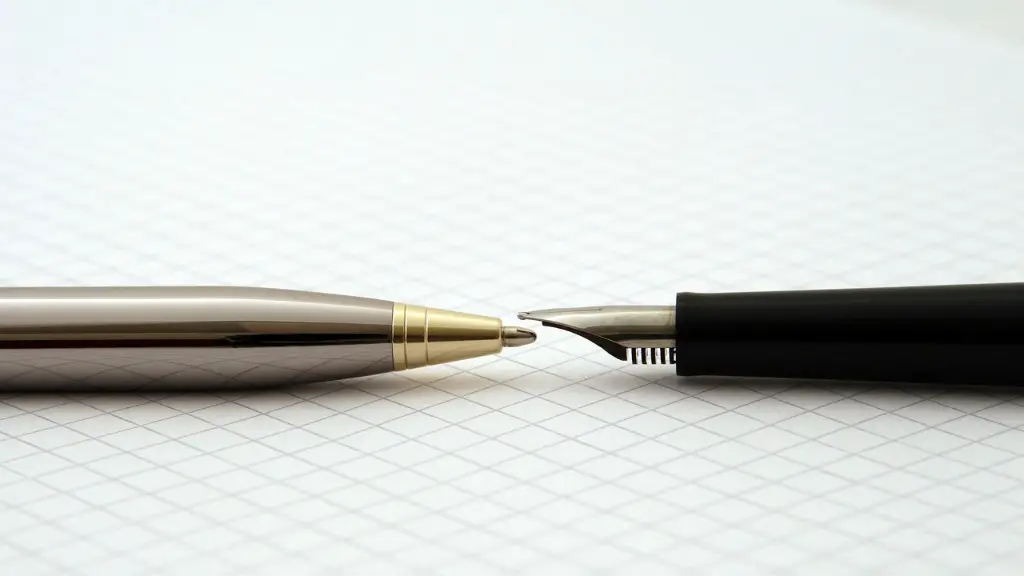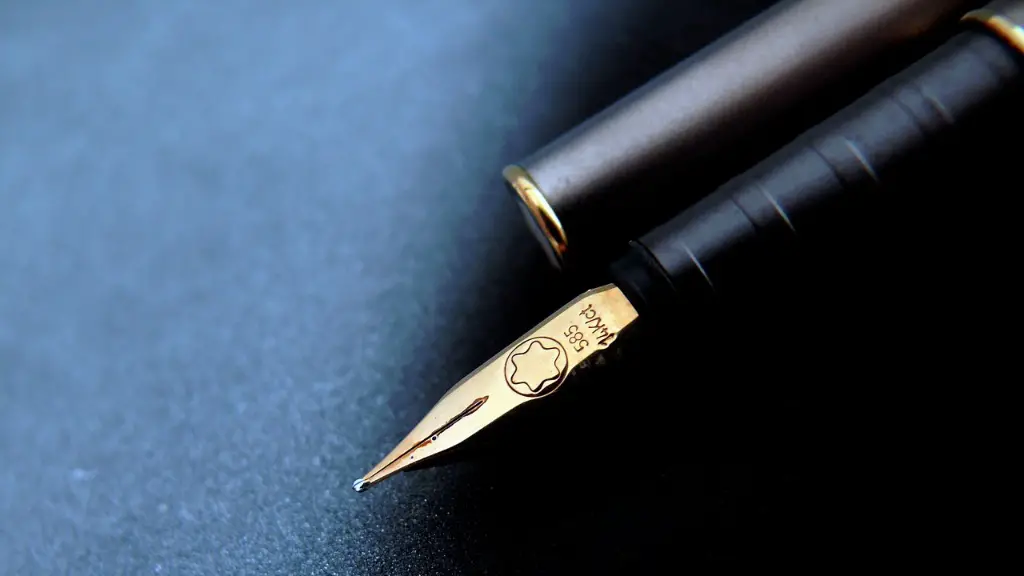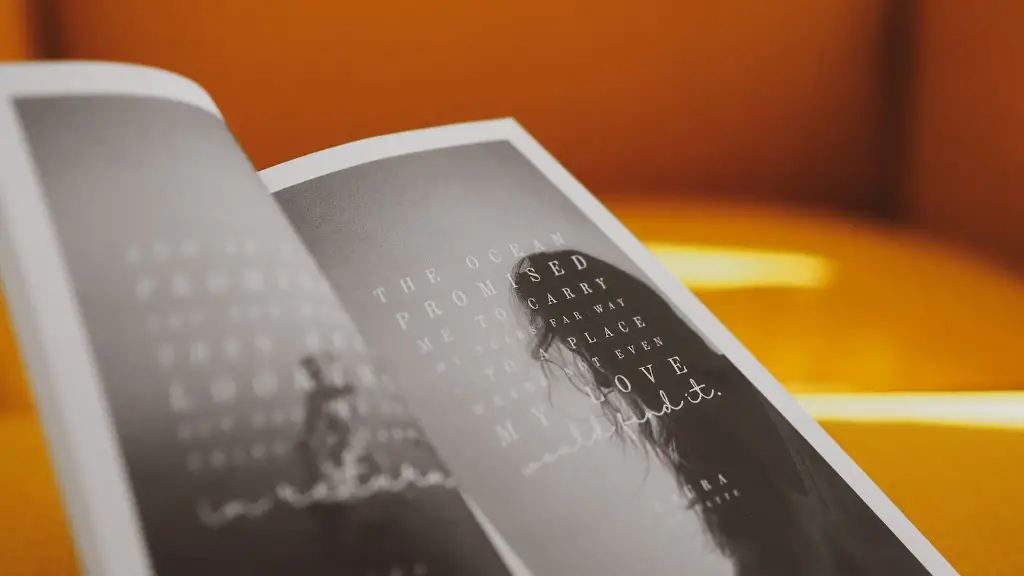A Poet’s Insight
Poetry is celebrated as one of the oldest forms of human expression, transcending cultures, community and language in ways few other mediums can. However, due to the academic entry barriers that have been built around the form, understanding the complex frontiers of its world can seem daunting to most. Within this article, readers can gain an insight into how to best cite poetry books when used in an academic article.
Structuring a Cite
When citing poetry books, one must understand the elements that make up a successful quote or analysis. Generally, citations are broken down into two parts, the bibliographic information (the written statement) and the quotation itself. It is important for the writer to ensure that whatever information is obtained from the book is accurately represented because veracity is essential in the field of academia.
The bibliographic information should include the author(s) of the poetry compilation, the title of the book and the compiler or editor, the city of publication, the publishing house and year of publication. It is suggested that when citing a poem anthology, writers indicate only the page number of the poem and not the page range.
Citation Styles
The next step in the process of citing a poetry book is to consider which citation style the writer is following. Different formats require a certain ordering of elements in order to be technically correct. In general, different academic institutions have varying preferences on which style is used however the two most common used today are the Modern Language Association (MLA) 8th edition and American Psychological Association (APA) 7th edition.
For MLA 8th, the basic pattern for citing a poem from an anthology is as follows: Last name of author, first name. “Title of Poem.” Title of Collection, edited by Editor’s name, Publisher, Year of Publication, page range.
Meanwhile for APA 7th, the basic pattern for citing a poem from an anthology is as follows: Last name of author, first initial. (Year of Publication). Title of poem. In Editor’s name (Ed.), Title of collection (page range). City of Publication: Publisher.
In-text Citations
In-text citations are an important part of any type of academic writing, allowing the reader to evaluate the credibility of the information that is being shared. When citing a poem from a book, writers should directly attribute their text and provide the reference in their chosen citation style.
For example, if a writer was citing a work by the poet Edgar Allan Poe, they could include the line “Nevermore shall we two meet” (Poe, 1845, p. 176). This line then serves as a signal for the reader to look for the reference on the Works Cited page.
It should also be noted that when citing a specific line from a poem, writers should use quotation marks around the line of verse. This allows editors or readers to differentiate between the writer’s original language or ideas and that of the cited poem.
Digitisation
Digitalisation has altered the way that academics and students may now collect, select and analyse their sources for written work. The internet allows for cites of older works to be preserved and accessed easily.
When citing a digitalised book of poetry, the rules remain the same: attribute properly and follow the correct citation format. However, as digitalised prints of poetry books often do not have page numbers, it is suggested to include the line number within the poem or the version number of the particular digital piece being cited.
Preservation of Cite
The reality is that not all sources may be available online and as such, academicians must look to other sources for gathering information for their work. Understanding the complexities of citing poetry books becomes even more relevant and due diligence should be taken to ensure that the work is properly attributed.
It is recommended that a centralised catalogue of sources be kept, and that any physical copies of books used should be kept in the bibliographic collection so that the reader can go back to the source if need be. Doing so helps maintain the accuracy of the source and its verifiability.
Challenges in Citing a Poetry Book
One of the primary challenges in citing a poetry book is knowing which edition of the work is being referenced. As different versions of the same piece of poetry can exist due to variances in language, syntax or metre over time, it is important for writers to note which edition of the work their reference comes from.
In this case, it is recommended to look for clues in the title of the compilation, such as ‘Updated edition’ or ‘Revised edition’ etc. As well as this, writers should reference the release year for the edition of the work being used. Noting the details of the version when citing will ensure that the reader or future researcher can access the exact same material that the writer was utilising.
Finding Relevant Resources
In an effort to maintain accuracy and integrity of their work, writers should aim to look for the best and most relevant sources when it comes to citing poetry book. Government databases such as libraries, archives and museums often have free access to a huge variety of materials, as well as emerging digitalised resources.
Another option is to look for more obscure collections beyond more established sources, such as independent presses and academic publications. These often hold some of the most relevant and innovative content, while also promoting independent voices.
Creative Commons Licensing
Creative Commons is an initiative that supports copyleft or the freedom to copy, distribute, remix and adapt content from books, articles and other creative works. It allows for readers to utilise content in unique manners, such as making their own poems or digital stories.
When using material sourced from Creative Commons works, the basic form of attribution must still be followed. This includes a mention of the author’s name, the title of the source and the licence information. For example, Edgar Allan Poe’s “The Raven” (1845) by Edgar Allan Poe, licensed under a Creative Commons Attribution 4.0 International License.
Creative Use of Language
Citing a poetry book should not be boring or restrictive. Instead of technical terms, writers should aim to use words that create an emotional connection with the reader, transporting them to the depths of the cite itself.
Context is key to unlocking the potential of the cited poem, giving it a life beyond the physical boundaries of the book. Utilising powerful language to convey the intent of the writer, readers can come to fully appreciate the beauty of the poem and the poet’s intention.
Limitations
Despite the advances of technology, it is still difficult to replicate the intricate nuances of a poem when citing it. Despite the visuals, a poem cannot be fully explained in a written format and so certain elements, such as imagery and subtext, may remain elusive even to the trained poet.
For this reason, it is important to remember that citing a poem book may not encompass the holistic scope of the work, and that it is better to experience it in its intended form.
Complexity of Citing
Citing a poetry book is often viewed by many as a tedious task, however it is not so much the task itself as the complexities of the form that can often appear daunting. Understanding the terminology as well as the syntax and format of the text are essential to becoming a successful and accurate attributer.
When faced with the challenge of citing a poem, the best approach for any writer is to be meticulous in their research, and to practise good citation habits by familiarising themselves with the accepted and approved formats. Doing so can help the writer feel more confident and knowledgeable when it comes to making the best possible evaluation of their sources.
Copyright
It is also imperative to understand the differences between copyright, fair use and public domain. Copyright regulations generally protect any original work, allowing authors to maintain control over their content. As such, copyright laws can be a useful tool for writers to protect their work, as well as for readers to remain abiding to the law when using content for analytical use.
When citing a poem, academic integrity should always be observed, in accordance with copyright laws. Writers should always ensure that they are aware of any potential copyright infringements and ensure that any material used is not in breach of copyright regulations.
Accuracy of Sources
Lastly, it is important to remember that accuracy of the source material matters. Citing a poetry book incorrectly can not only lead to an invalid evaluation of the work but can also lead to the propagation of false information. Furthermore, an incorrect cite can also lead to other unintentional consequences, such as an overall decrease in the credibility of the work.
As such, it is recommended that writers to double check their information to ensure that the sources they have utilised are reliable. It is also suggested that they research the credibility of the source before utilising it. This could include looking up reviews from trusted sources, examining the artistic merit of the text and referencing any books that were consulted in the process.



